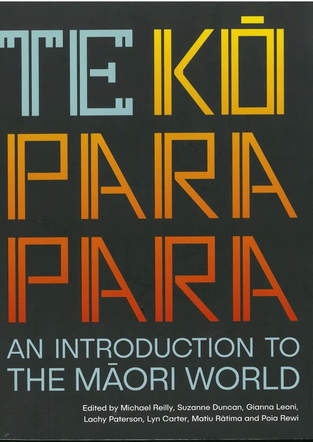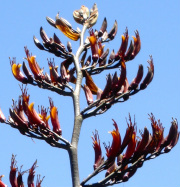
Edited by Michael Reilly, Suzanne Duncan, Gianna Leoni, Lachy Paterson, Lyn Carter, Matiu Rātima, Poia Rewi
I found this thick paperback volume of immense interest and thoroughly recommend it to anyone interested in an overview of Māori in Aotearoa from pre-European times through near annihilation to regeneration and positive potential futures.
The volume was initially intended as a cogent and comprehensive introductory resource for university students at the University of Otago and it is this indeed, but the wide-ranging contents are brim full of information and personal anecdotes that will appeal to the so-called ‘average reader’. Although academically generated, the book is easy to read and comprehensively referenced, with a quite massive bibliography, copious tables, a plethora of illustrations and an abundant glossary.
I also want to point out that the book also contains valuable insights and information for the professional scholar o te ao Māori [of the Māori world]. I found myself going off to research further the fascinating story of Thomas Chaseland, an Aboriginal Australia sealer in Bass Strait in the late 1700s, as just one example.
The volume is divided into three separate yet interrelated sections, which feed into and back from one another: a reflection of the interconnected Weltanshauung of Māori. These sections are –
Part One – He Tumu – Foundations
Part Two – Tāhuhu Kōrero – Histories
Part Three – Tākiri te Ata - Futures
The tone is well balanced and sensible throughout and never emotive, given there is every reason to be if one is Māori, after the cauldrons of colonisation ransacked the race and their after-effects continue today. Think Te Tiriti o Waitangi. The facts of the matter are always presented calmly and are backed up by the extensive notes pertaining: any fingerpointing of blame is muted, but the calm statements of truth speak for themselves.
For example, the conclusion to the chapter delineating 1840 to 1863 states soberly –
New Zealand’s governors made little effort to engage Māori chiefs within the workings of the nascent state from the start of colonisation...The government’s primary relationship with Māori concerned acquiring land for Pākehā settlement...Despite the humanitarian ideals with which the Treaty had been formulated, the underlying dynamic of colonisation, as imagined by nineteenth-century Pākehā, meant that conflict, if not inevitable, was not surprising (p.208).
Another interesting aspect of the tome is that the overall approach is Ngāi Tahu in orientation and thus geographical locations, historical events, important personages and especially dialect are primarily Te Waipounamu in focus. Thus the title – he kopara is Ngāi Tahu for a bellbird, rather than he koromiko or he komako. It is refreshing and significant that this iwi is to the fore throughout and that this especial ambience in no way diminishes the content; rather it strengthens it, for all the contributors are in the same waka. I did find it odd, however, that the publisher is University of Auckland Press.
In summary, given that, “there is no single Māori reality...Māori identity is a complex issue” (p. 392-3), this book firmly reinforces the point that Māori of whatever iwi are and always have been and always will be, resilient, adaptable, innovative. They are staunch to their kaupapa, willing to stand up for their rights, culturally and therefore epistemologically distinct, and complex yet holistic in cosmology and ontological foundation. I always knew this, of course, yet this book further reinforces the point. The only issue I have is that there is not a te reo version, eh.
Ko te pai rawa atu tēnei pukapuka.
Editors: Michael Reilly, Suzanne Duncan, Gianna Leoni, Lachy Paterson, Lyn Carter, Matiu Rātima, Poia Rewi
Publisher: Auckland University Press
ISBN: 978 186940 867 1
RRP: $69.99
Available: bookshop

 RSS Feed
RSS Feed
